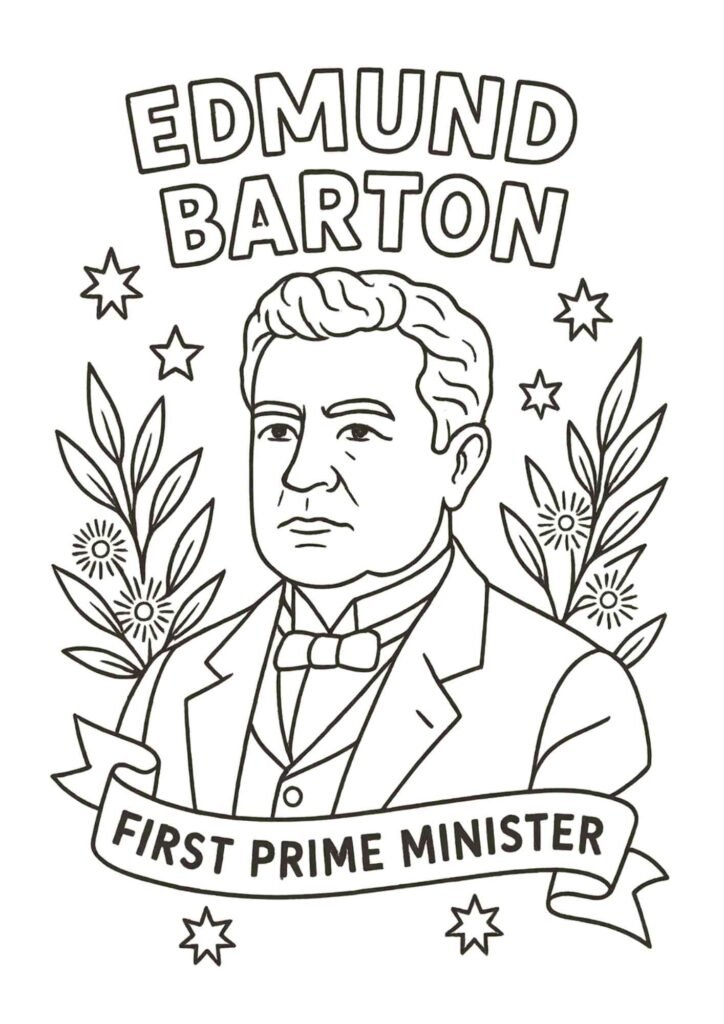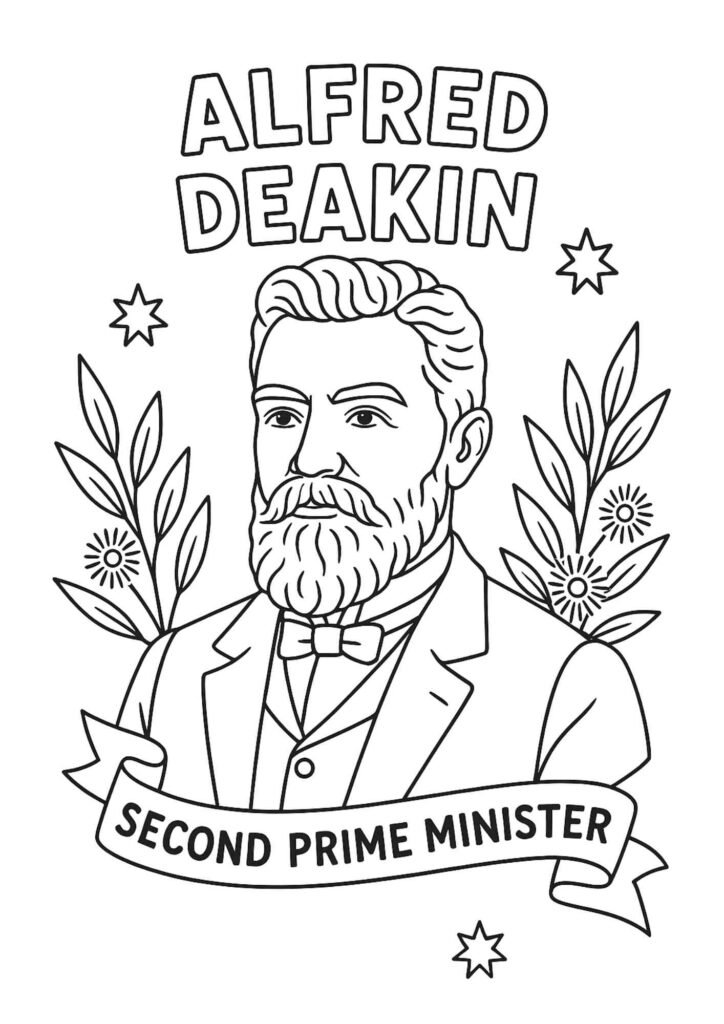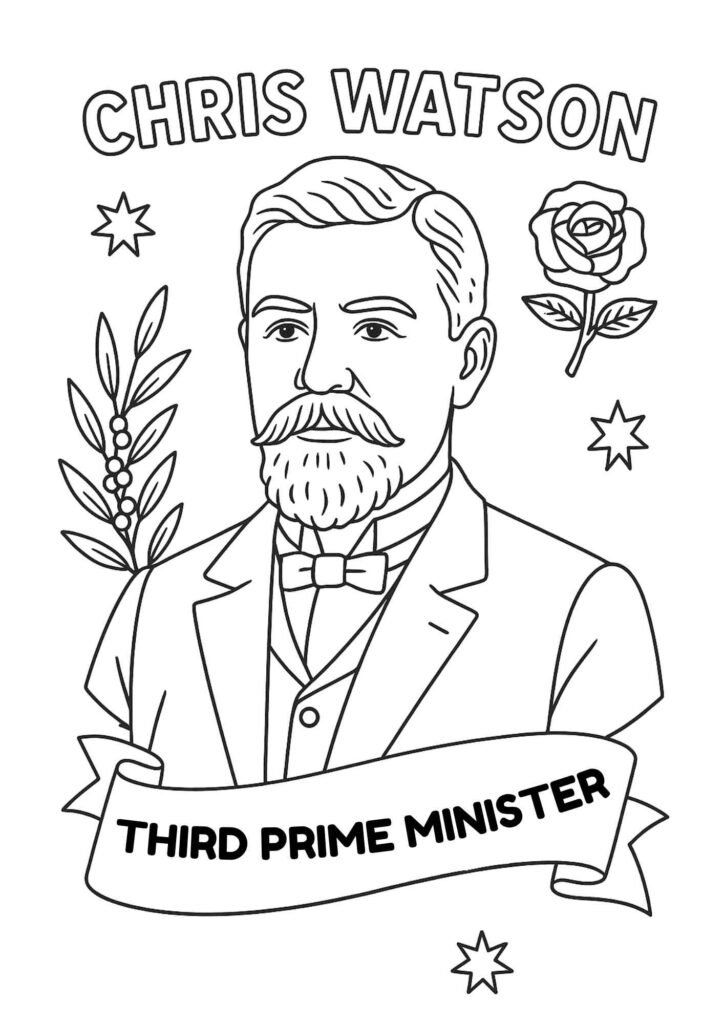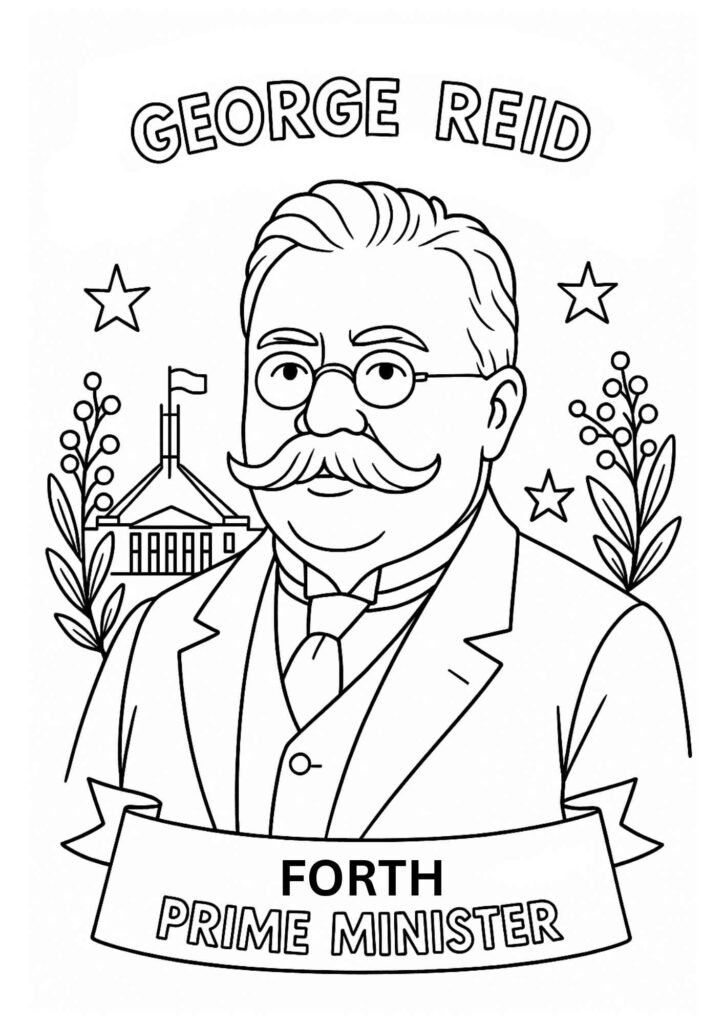Australia’s story is told through its leaders. A simple yet powerful way to invite children into that narrative is through colouring — combining creativity, curiosity, and historical thinking in a fun, low-barrier format. The Free Australian Prime Ministers Colouring Pages printables are perfect for OSHC, classroom settings, or at home, giving young learners a hands-on way to explore Australian civic history while practising fine motor skills and visual literacy.
These sheets include black-and-white portrait outlines of various Australian prime ministers, labelled with ordinal positions like “Third Prime Minister” or the actual names (e.g. “Andrew Fisher”), making them both intriguing and scaffolded. Because each page is clear and uncluttered, children can focus on colouring, then dive deeper into who each leader was, when they served, and what context shaped their time in office.
👉 Download the Free Australian Prime Ministers Colouring Pages
Why These Colouring Pages Work So Well
- Minimal setup, maximum learning — Unlike complex projects, these sheets require just printing and basic colouring tools. That makes them ideal for mixed-age groups, transitional times, or as “fast finisher” tasks.
- Historical sequencing built in — The inclusion of ordinal labels helps children think about order, eras, and change over time (e.g. “third,” “fifth”).
- Flexible across ages & uses — You can use them in primary classrooms, for family time, as a bulletin board project, or in history/civics units.
- Promotes discussion & inquiry — Because the sheets are blank canvases with minimal prompts, they invite questions: Why did leadership change? What events marked each term?
- Reusable & multipurpose — Once printed, you can use them repeatedly for national days, history weeks, or to refresh your civics corner.
How to Use the Prime Ministers Colouring Pages: A Step-by-Step Guide
- Print & distribute — Use standard A4 or letter paper.
- Brief introduction (2–3 mins) — Ask, “What is a Prime Minister?” and “Why do countries change leaders over time?”
- Colour & label — Students colour the portrait, read the label (e.g. “Third Prime Minister,” named prime minister), and reflect on placement.
- Add a fact bubble — Invite kids to research one fact (party affiliation, years in office, major accomplishment) and write it on the page.
- Create a classroom timeline — Assemble completed sheets in chronological order to visualise leadership succession.
- Pair-share reflection — Let kids share something new they learned about one prime minister.
Extensions, Differentiation & Enrichment
- For fast finishers: Challenge them to shade with limited palettes, try cross-hatching, or design a background reflecting the era.
- Vocabulary support: Introduce words like parliament, election, term, cabinet, and create a mini word wall.
- Mini research cards: Create small info cards for each leader (who, when, why notable) and have children match them to their coloured portraits.
- Home link: Send a coloured sheet home and ask the child to explain who they coloured, what they learned, and where that leader sits in Australia’s timeline.
- Display & gallery walk: Put completed sheets on display; invite students to walk through, read the fact bubbles, and talk with peers about how leadership changed over time.
Learning Connections: Civics, History & Beyond
- Civics & Citizenship: Children begin to understand the role of the Prime Minister, how governments change, and the concept of leadership.
- History & Chronology: The ordinal labels help learners visualise order, eras, and progression across time.
- Language & Communication: Explaining their colour choices, writing fact bubbles, and sharing with peers strengthen expressive skills.
- Visual Literacy & Fine Motor: Colouring, shading, and adding detail builds hand–eye coordination and observational skills.
- Inquiry & Research Skills: Adding an element of research shifts the activity from static to investigative — learners seek context and stories behind the faces.
Tips for Smooth Implementation
- Keep colouring tools simple (pencils, crayons, fine markers) so children aren’t overwhelmed by options.
- Offer choice of figure or leader to colour to respect interest differences.
- Use clipboards for outdoor sessions — let children colour where they feel inspired.
- Pair learners strategically — one might colour while another researches the fact bubble, then swap.
- For inclusion, offer tracing sheets or darker line versions for learners who need more visual support.
Final Thoughts
The Free Australian Prime Ministers Colouring Pages are more than colouring sheets — they’re a bridge between art, history, and civic awareness. They give children agency: to choose a leader to explore, to imagine their era, and to place them on a timeline of change. They transform passive colouring into active inquiry, and simple portraits into portals of conversation. Use them for national history days, as part of civics units, or as a calm but purposeful maker moment.
🖍️ Ready to Start Colouring?
Bring history to life in your classroom or OSHC program today!
👉 Download the Free Australian Prime Ministers Colouring Pages
Each printable page celebrates a piece of Australia’s story — from Edmund Barton to modern-day leaders — helping children learn, create, and connect through art.
Print, colour, and display them proudly to inspire curiosity and conversation about our nation’s history!




